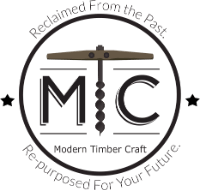Historic barns. Some may look old and weathered, but many hold a vibrant, absolutely beautiful story. Others are standing tall, still displaying their original history.
Barns have created a rich history in the U.S. Along the way, barn styles have changed occasionally. But each style of timber-frame barn was created with pure purpose and expert craftsmanship, using local resources and the tools available to builders at the time.
So, could you tell which types of barns were built for different purposes? Could you identify barns in their various forms?
Barn identification isn't a course taught in school, for sure. But for those of you interested in adding charm and character to your home with rustic barnwood fixtures and decor, it's fun to know where your items come from.
Here are some different barn styles found across the good ole United States.
Bank Barn
Originally known as a Pennsylvania Bank Barn or Sweitzer barn, this barn style was one of the most prominent barn types found in the United States prior to 1880. However, they earned the new name bank barn because one side is built into the bank of the hill, allowing livestock and wagons to be easily driven into the barn.

Bank barns range from just twenty feet to over a hundred; they are two-story and rectangular in form allowing for multiple farm functions under a single roof. The multiple levels would permit for manure and feed to be stored on the base level, along with a few cattle. Livestock would be stored on the level that was even with the ground outside to allow for easy movement of animals and hay.
The remaining room in the top of the barn allowed for hay storage. When the livestock needed to be fed, hay could be pushed from the loft to the animals below; when the animals needed to pass said hay, it would fall to level below, allowing gravity to do most of the work.
Gambrel Barn
When most people picture a barn, this is what comes to mind. A gambrel barn has a central ridge at the top and the upper-level area is expanded by two additional ridges on either side. This was mainly to allow for more hay to be stored while still having room to navigate throughout the upper level.

The gambrel barn began being built in the 1800s and were designed to be simple and open. Also known as Dutch Barns, Gambrel barns are one of the rarest types of barns in America left today.
Round Barn Style
Probably the most unique looking style of barn, a round barn can be polygonal or octagonal as well! From 1880-1920 there was a spike in round barn production and they reached their peak. The round barn would allow for a continuous work space inside, eliminating the need to step around and accommodate for posts.

The cattle would line the barn in wedges along the wall and feed would be distributed from the middle. Round barns have also been proven to be stronger in structure, easily holding up to and withstanding Mother Nature's elements.
Gable Barn Style
A gable barn is also known as a New England barn or Three Gable Barn. This style is the most common barn style dating back to the 19th century. A gable barn will consist of one main block, a two-storied gable-roof shed with right angles on either side (creating three gables, one on each end of the main block and one at the end of the wing).

Many gable barns will represent the shape of an L or a T. The gable barn was often used to stream straw, which was a technique becoming popular in the same time period.
Now that you know, get out there and identify as many barn styles as you can!
If you want to learn more about historic barns, here are some other styles and you can check out our post about Mail Pouch barns.


